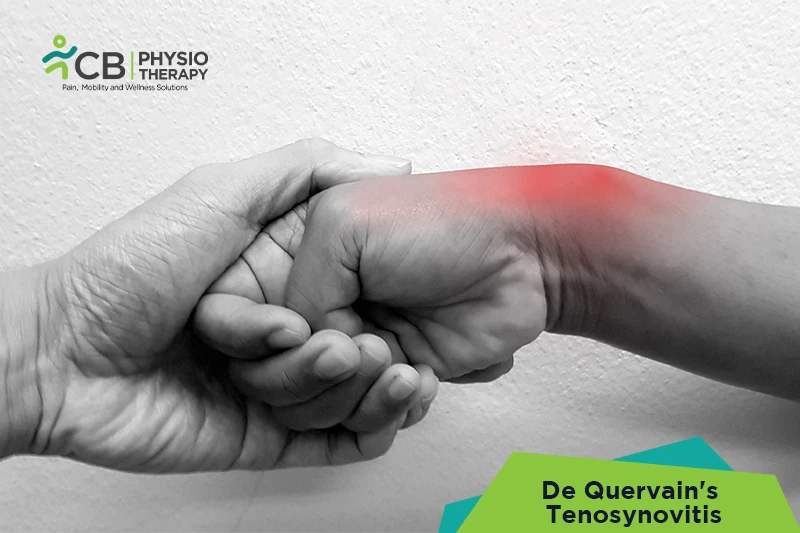
De Quervain's tenosynovitis or washerwoman's sprain or mummy thumb or radial styloid tenosynovitis is a painful condition affecting the tendons on the thumb side of the wrist. It causes painful swelling or inflammation of the tendon of the thumb. It is a tendinosis of the tendon sheath that covers the two tendons of the thumb, the extensor pollicis longus, and the abductor pollicis brevis. The pain may extend from the forearm to the thumb base. De Quervain's tenosynovitis hurts while turning the wrist, grasping, or making a fist.
Symptoms of de Quervain's tenosynovitis can radiate to the forearm, also other symptoms include:
De Quervain's tendinitis can be caused by several factors, including:
Pathology
De Quervain's tendinitis is the inflammation of the tendons which control the movement of the thumb and the tendon sheaths. The repetitive movements result in pain at the outer side of the wrist. Pain and discomfort increase while gripping or rotating the wrist.
De Quervain's tenosynovitis does not require any investigation it is easily diagnosed by the Finkelstein test.
The patient is asked to make a fist with the fingers wrapped over the thumb. Keeping the hand in a fist position, the wrist is moved up and down, the motion of shaking someone's hand. The swollen tendons are pulled through the narrowed sheath and result in pain, thus diagnosed as de Quervain's tenosynovitis.
Medication: Anti-inflammatory medication, such as naproxen or ibuprofen, steroid injection.
NOTE: Medication should not be taken without the doctor's prescription.
Non-surgical treatments
Splints:
Splints or braces are recommended for rest. These are used to immobilize the wrist and thumb at the meta-carpo-phalangeal joint but also allow the thumb end joint and other fingers to move.
Surgical treatments
Surgery may be recommended if non-surgical treatments do not help relieve pain and swelling. A tiny cut is made in the sheath to pass the tendon. The sheath is cut which allows more room for the tendons to slide. Surgery is done to alleviate pain and swelling and restore range of motion. After recovery, physiotherapy is done to strengthen the muscles.
Apply ice to the thumb and wrist to decrease the inflammation, swelling, and amount of pain. Avoid activities that are causing pain and swelling.
Heat therapy or thermotherapy can help relax and loosen tight musculature.
Transcutaneous electrical stimulation (TENS) can be used to relieve pain.
Ultrasound therapy helps to accelerate the healing process of the soft tissues such as tendons and synovial sheath.
Laser therapy is found to be the most used and effective in reducing pain and increasing functionality in patients with De Quervain tenosynovitis.
The taping technique can also be used to decrease pain and thus improve function.
Massage
Massage at the thenar muscles can help relax tight musculature that causes pain. It decreases fascia restriction, stretches the connective tissue, and promotes a better healing environment.
Myofascial release is a soft tissue technique used to relax the muscles thus reducing the tension in the tendon or muscles.
Range of motion exercises
Active hand movements and range-of-motion exercises are recommended.
The strengthening exercises are progressed from isometric, eccentric, concentric, and then glides. These exercises help to strengthen and stabilize the muscles and joints of the hand and thumb. Shoulder and elbow strengthening exercises are also recommended to place less load at the wrist.
Stretching exercises
Stretching exercises or gliding techniques are recommended to allow the thumb tendons to glide easily within the tunnel.
Mobilization
Mobilization decreases the pain and improves the range of motion. A radial glide of the proximal row of carpals is given then the patient is asked to move the thumb into radial abduction-adduction.
The patient is advised to make changes if required while doing activities or exercises e.g. changing the inappropriate biomechanics used while a task is done, e.g. ergonomics for the usage of the phone, writing or using a keyboard, etc.
Select your City to find & connect with our experts regarding Physiotherapy for De Quervain's Tenosynovitis